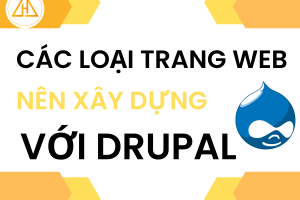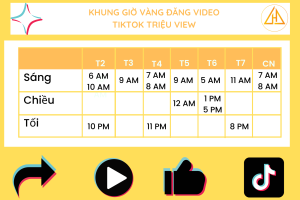Well, why not start with the basics. The goal of your SEO effort is to make your pages appear in Google search results. But it’s all going to be in vain unless the pages themselves are built the right way. So, let’s take a look at what makes a perfectly optimized landing page.

In this post:
1. Clean URLs
2. Attractive title
3. Meta description
4. Schema markup
5. Optimized headings (H1-H6)
6. Keyword saturation
7. Content length
8. Visual aids
9. Above-the-fold content
10. Mobile-friendliness
11. Internal links
12. Outgoing links
13. Comment section
1. Clean URLs
Clean and consistent URLs are preferred by both search engines and human visitors. And though the best practices mentioned here are not "a must", it's a good idea to try to stick to them whenever possible.
Use keywords
Many SEOs believe that the influence of keyword-rich URLs on rankings is a thing of the past. While it may or may not be true, you are not losing anything when you include keywords in your URLs. So, at the chance that it still works, we do recommend building your URLs around your main keywords.
Not to mention that a keyword-rich URL may actually improve your click-through rate in search results. URLs are a part of your snippet, and having it show another keyword will make it appear more relevant:

Avoid special symbols
Special symbols (&, %, $, @) are not expressly forbidden, but they do make your URLs harder to read. Also, keep in mind that you can’t use spaces — they will be converted to %20, which does not look appealing to your users.
Think ahead
Avoid including information that may change in the future. Let’s say you publish an article called Top 10 Gravel Bikes to Buy in 2020 and your URL ends with /10-gravel-bikes-2020. A year goes by, the article ranks very well, and you want to update it to Top 12 Gravel Bikes to Buy in 2021. Except you can’t because your URL will forever give you away:

Be consistent
Make sure that all of your URLs follow the same formatting rules. This way you will avoid creating duplicate pages and messing up your website structure. Some of the popular URL formatting rules include sticking to lower case letters, using slashes to separate folders, and using dashes to separate words.
Mind the length
Shorter URLs are, generally speaking, preferable. You don't need to take this to the extreme — it is normally ok for URLs to be up to 50-60 characters long. But if you have URLs pushing 100+ characters, there's probably an opportunity to rewrite them and make them more appealing.
If you're building your URLs based on the title of your post, think of cutting down on stop words (and, but, a, the, and others) to make them shorter and more readable. Also, try to avoid an excessive number of folders — use your folder structure to show the hierarchy of your content.
How to check
1. Launch WebSite Auditor and go to Site Structure > Site Audit to check your website for dynamic URLs and URLs that may be too long.

2. Switch to Site Structure > Pages to inspect a full list of your website’s URLs.

2. Attractive title
SEO-wise, the title tag is one of the most important page elements. It is the biggest part of your SERP snippet and it tells search engines what is the main subject of your page.
Start with keywords
The closer your target keyword is to the beginning of your title tag, the more relevant your page will be considered by search engines. Try to always start your title with your keywords to emphasize their importance.

Mind the length
Titles that are over 50-60 characters long will be truncated in SERP. This is not a big deal — you will often see truncated titles ranking on the first page of search results. In fact, sometimes it may even create a cliff-hanger effect and encourage users to click through. But, it is essential that you include all of the important words before the cut-off point:

If you need to squeeze more text in the title, it is perfectly ok to ignore proper grammar and use n-dashes instead of m-dashes, use ampersands instead of “and”, leave some words to be implied, and even skip articles.
Make it sell
A snippet is very much like an ad for your page and your title should be designed to drive click-through. When writing a title, make sure to include your main selling point, your competitive advantage.
The type of information you include will largely depend on the type of content you are promoting. Sometimes it is important to highlight that the content is fresh:

Other times, it is more important to highlight the sheer volume of the information on your page:

If you are not sure which aspects of your content to advertise, then simply google your topic and take a cue from top-ranking snippets.
How to check
In WebSite Auditor, you can audit the list of your page titles to find any missing, duplicate, and too long titles.

And if you switch to the Content Editor tab, you can actually create and edit your titles with the help of character count, live preview, and snippet samples from your search competitors:

3. Meta description
A meta description is a short paragraph of text that appears in your search snippet. The approach towards crafting a perfect meta description is not that much different from crafting a good title. It has to be an ad-like copy designed to sell your page, it has to include a few keyword variations, and it has to fit into the character limit of 150-160 characters.
Some SEOs say that meta descriptions do not matter anymore because Google would often ignore them and instead use a different part of your copy as a description. Truth is, Google does it for a small percentage of searches, to make your snippet appear more relevant for some outlier queries. For the majority of searches, however, your description remains unchanged.
How to check
To check meta descriptions across all of your pages, launch WebSite Auditor, and go to Site Structure > Site Audit. There, you will be able to find a full list of pages with missing descriptions, as well as a list of duplicate descriptions, and descriptions that are too long:

4. Schema markup
Structured data can do wonders for your SEO effort. It can help you create entities, accelerate your rankings in local search, and enhance your search snippets:

Not all types of content can benefit from schema markup, but some pages will have a hard time ranking in search without it. Today, it is almost impossible to rank a cooking recipe page without using schema, but also news articles and product pages. And as time goes on, more and more types of pages become eligible for structured data benefits.
However, the thing to remember is that using schema properly requires some extra skills. And the two main options we recommend if you're dealing with Schema for the first time are:
WordPress plugin
If your website is built on WordPress, then you will find no shortage of plugins offering structured data optimization.
Google's Markup Helper
If you are willing to get your hands a little dirty, you can visit Structured Data Markup Helper. The tool helps you apply your own markup in a user-friendly manner. Just choose the type of page you are creating, highlight page elements, and assign the type of markup. When done, download the HTML file and upload it to your website.

How to check
Conveniently, Google also provides a way to check your markup — Rich Result Test. Simply enter your URL and get the verdict, along with some advice on how to fix discovered issues:

5. Optimized headings (H1 - H6)
HTML heading tags (H1-H6) are used to structure your content by splitting it into distinct sections. Heading tags are a strong relevancy signal to search engines, so it's a good idea to include your keywords in some of them.
H1 heading
Technically, each of your pages has two titles. The title tag, which is displayed in your search snippet, and then the H1 tag, which is displayed on the page itself. The benefit of the H1 tag is that, unlike the title tag, there are no character restrictions. It means you can make it longer, include more keywords or different keyword variations.
H2 headings
H2 tags split your page into high-level segments. They help users navigate your page, but also help search engines understand what the page is about. Think of them as mini-titles within your content — make them informative for users’ sake, but don’t forget to include secondary keywords.
H3-H6 headings
These are used to mark further subsections within the content. It is doubtful that you will see a measurable impact of using keywords in these tags, so there is no need to force it — do whatever feels natural.
One thing I would like to add is that it is very rare for a piece of content to require headings beyond the H3 level. If you find yourself venturing into H4 and H5 territory, then there is probably a missed opportunity to optimize your content structure.
6. Keyword saturation
Google is getting pretty good at processing natural language, so there is less of a need to stuff your content with keywords. And yet, keyword optimization is not completely gone, it’s just evolved. Here are some keyword optimization tips that still make sense:
Use keywords early in the copy
This is something that you probably do naturally. But a lot of people start their posts off with a long intro and don’t get to use their main keywords until later in the post. It's better to drop your keyword somewhere in the first 100 words or so. It helps Google understand what your page is all about.
Go beyond exact matches
Remember the Hummingbird algorithm update? The one with which Google learned to recognize the meaning behind a search query and give a common answer to a number of "different-in-keywords" but "same-in-meaning" queries? This update changed the way SEOs optimize pages — now we no longer think "single keyword optimization", but try to make our pages relevant for a whole group of synonyms and related terms.
So, adding all kinds of related keywords will help you improve your pages' rankings and avoid the keyword stuffing issues.
How to check
Launch WebSite Auditor, go to Content Analysis > TF-IDF, select a page you're about to optimize and add your main keyword. The app will analyze top pages ranking for the keyword, and calculate recommended keyword saturation:

And if you switch to the Content Editor tab you will be able to create and edit pages using live keyword recommendations:

7. Content length
You would often read about the ideal content length being this or that many words. The exact number is always changing and currently hangs at about 2,000 words per page. In reality, there is no such thing as the ideal content length — what matters more is for your page to cover the topic in full.
So, instead of using some arbitrary number for all of your pages, we suggest determining word count for each of your pages individually. One way to do that is to look at top-ranking competitor pages and take note of their content length, as well as content composition.
How to check
Launch WebSite Auditor and go to the Content Editor tab. Whether you are creating a new page or editing an existing one, the tool will analyze competing pages and suggest an optimal content length:
.png)
Keep in mind that the number of words is not the goal in itself, it’s more of an indicator. If your content is significantly shorter than the benchmark, then perhaps your competitors have covered more talking points. In this case, explore their pages in more detail and borrow some of their content ideas. Do not just fluff your content with empty words.
8. Visual aids
Enhancing your content with images and videos can have multiple SEO benefits. It keeps users engaged, it tells Google you have higher quality content, it makes you eligible for image search, and it can actually drive backlinks to your website — if your visuals are unique enough to be borrowed by others.
Fill out your alt tags
Alt tags are pieces of HTML code that describe your image. They are not visible on the page, but search engines can access them to better understand what the image is about. The best practice is to keep your alt tags to a few phrases, describing the image as literally as you can. Keyword stuffing and overly long alt tags are viewed by Google as a red flag.
Compress your files
Use standard image formats and compress your images before uploading them. This will have a positive effect on page speed and overall user experience. If you do not have any experience processing images, use an online compressor or a CMS plugin — most of them do just fine.
Use descriptive filenames
This one is hardly a ranking signal, but Google does suggest using descriptive names for your image files. This should probably be a short version of your alt tag. Although I wouldn’t worry about it too much.
How to check
To check your website’s images for missing alt text, launch WebSite Auditor, and go to Site Structure > Site Audit. There, you will be able to find a full list of images with missing alt texts:

9. Above-the-fold content
Above-the-fold content refers to the top part of the page visible when it’s just loaded. This is what makes the first impression on your visitors and Google pays special attention to that part of your page.
Remove distractions
Google does not endorse excessive pop-ups, distracting ads, and other obstacles that get in the way of viewing page content. So, when designing your pages, make sure to keep distractions to a minimum. Be doubly vigilant on mobile, as screens are smaller and distractions are bigger.
Optimize for Core Web Vitals
Google has recently introduced the concept of Core Web Vitals. The vitals are user experience metrics that are measured based on the above-the-fold content. Specifically, how fast it loads, how stable it is while loading, and how soon it becomes interactive:

How to check
Core Web Vitals are tracked in your Google Search Console account, where you can see your optimization progress over time as well as view a report of all issues discovered on your pages:

Alternatively, you can check individual pages using Google’s PageSpeed Insights:

10. Mobile-friendliness
With a large share of Google searches coming from mobile devices, Google is increasingly focused on improving mobile search results. From a nice-to-have, mobile-friendliness has turned into a must — if your page isn't optimized for mobile devices, it's likely to be discarded from mobile search results completely.
Responsive design is perhaps the simplest and most widely used solution to go mobile-friendly — and it's the one Google recommends, too. If you use WordPress (or any CMS, really), choosing a responsive template for your site is about all it takes.
You're in for more work if your site is HTML-coded with no CMS in place. However, there's some documentation available on adapting the responsive design for web developers. It might take a bit of work to get every aspect right, but it's an investment that'll definitely keep paying off.
How to check
If you are using Google Search Console, then you can check your pages en masse and even track your optimization progress over time. Go to Enhancements > Mobile Usability and see your mobile optimization dashboard. Just below the graph, you will also find a list of all discovered issues and offending pages.

If you are not yet on Google Search Console, then you can use Google’s Mobile-Friendly Test to check each of your pages individually:

11. Internal links
A properly structured website should have a well-organized flow from one page to another. One goal of such flow is to pass authority from popular pages to less popular ones. Another goal is to move users down the sales funnel.
As you create a new page, you should think of where you want your visitors to go from there — do not let them exit your website. Ideally, each of your pages should link to other relevant pages and, eventually, to products or other conversion points.
An easy way to create this flow is by adding a recommendation system that automatically suggests pages related to the one currently viewed — the way we do at the end of our blog posts. Additionally, you can place internal links within your main content through various “read more” suggestions. We also use these types of internal links in our blog and they help us retain between 5% and 10% of our users.
12. Outgoing links
In SEO we often talk about incoming links as the main source of website authority, but outgoing links may also be useful. By linking your content to high-quality websites, preferably the ones operating within your niche, you can pull some of their authority towards your own website.
So, whenever you create a piece of content, see if you can place a couple of links to other relevant websites. Don’t do more than a few — you don’t want Google to get suspicious and you don’t want to lead users away from your website.
13. Comment section
If you allow comments on your website, then you should make sure that any links posted in the comment section are automatically set to nofollow. The nofollow tag stops links from passing any link juice to their destination, which makes these types of links useless for link-building. This, in turn, discourages other SEOs from spamming your comment section with their links — something you could get penalized for by Google.
It should be noted that most comment integrations (WordPress, Disqus, Facebook) automatically add the nofollow tag to all links. So it’s only an issue if you are building a custom solution or using an off-brand plugin.
Final thoughts
All in all, these are the most important things to consider in on-page SEO for your website. If you take into account most of the factors listed above, you will be able to build a strong base for your future off-page SEO efforts.








